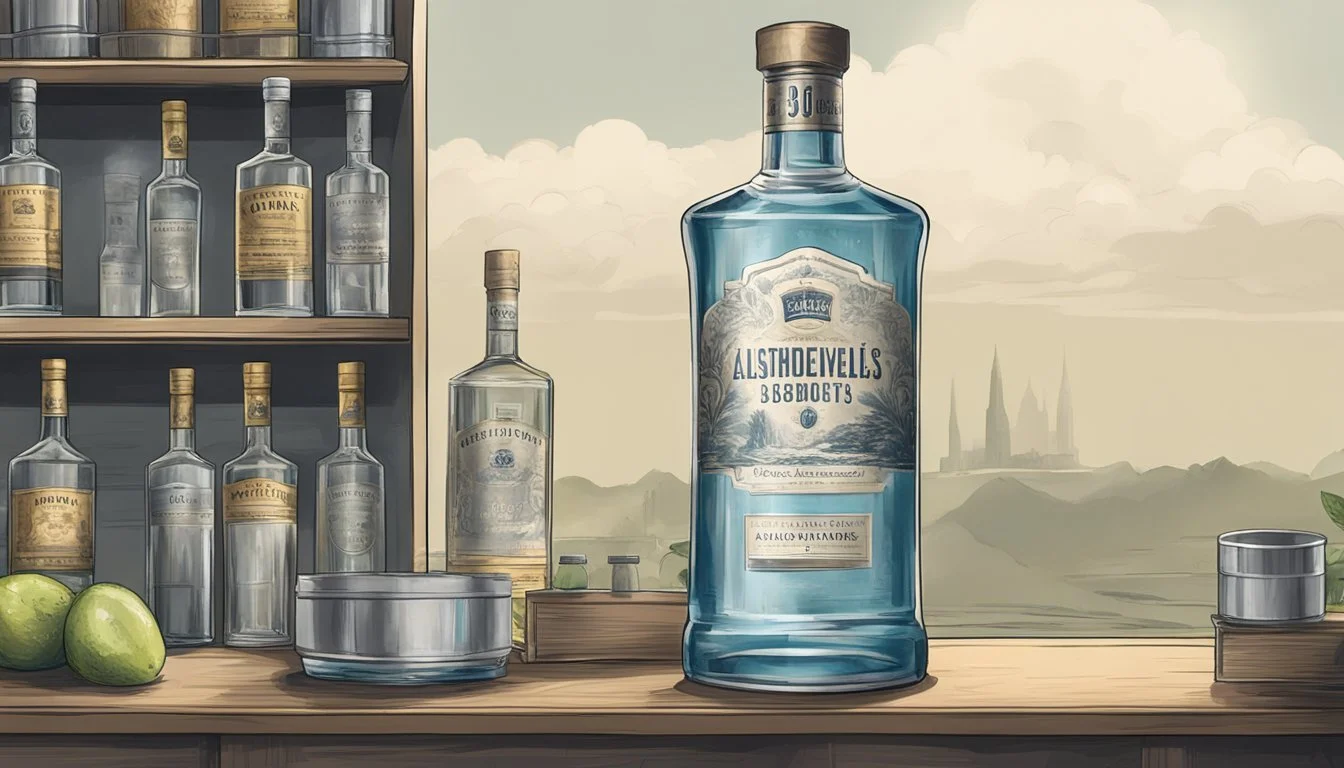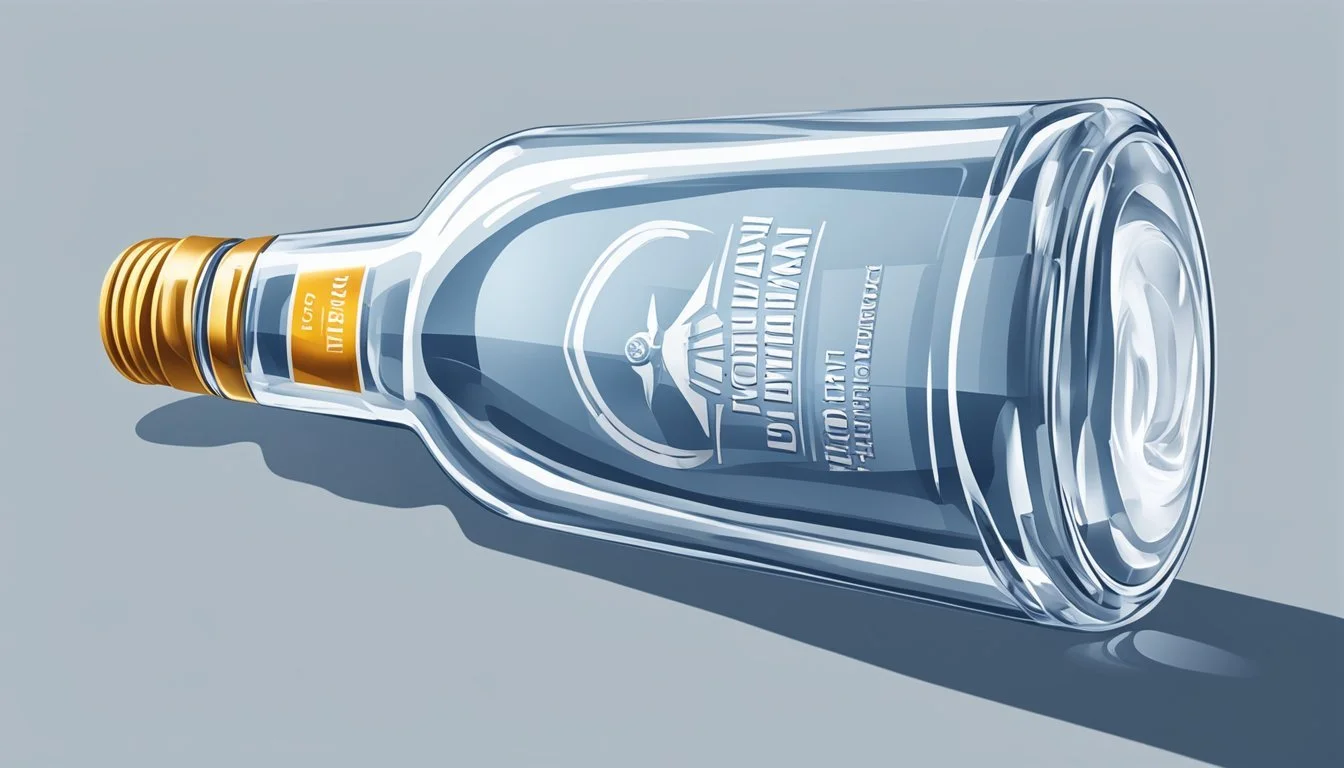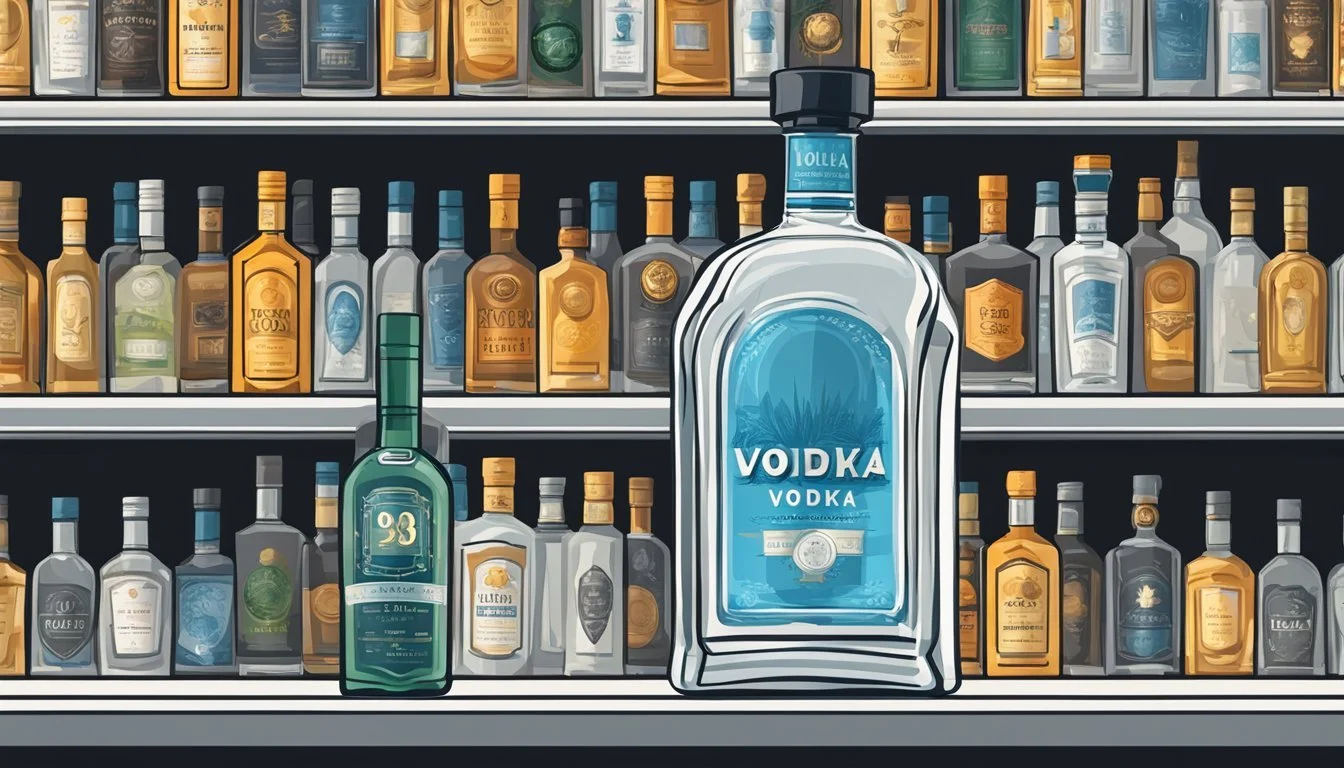Does Vodka Go Bad?
Understanding Shelf Life and Storage Tips
Vodka, a distilled spirit known for its clarity and neutral flavor profile, is a staple in many bars and liquor cabinets. Conventional wisdom suggests that distilled spirits like vodka are enduring, with a shelf life that extends well beyond their opened and unopened counterparts. Unlike perishable food and drinks that can spoil or rot, vodka's high alcohol content acts as a preservative, staving off the typical process of decay. The longevity of vodka after opening does depend on how it is stored—exposure to air, sunlight, or fluctuating temperatures can impact its quality over time.
While vodka does not expire in the traditional sense, it can degrade. The signs of degradation might not be as noticeable as in other beverages, but they manifest as subtle changes to the vodka's flavor and aroma. An opened bottle might see a diminishment in taste quality due to oxidation, which is a slow and gradual process. Flavored vodkas, on the other hand, have a shorter shelf life due to their additional ingredients that are more susceptible to changes. Regardless of the type of vodka, a tight seal is crucial to maintain its condition and extend its usability.
Properly storing vodka in a cool, dark place minimizes the risk of spoilage and preserves the integrity of its original state. Keeping the bottle tightly sealed when not in use prevents the evaporation of alcohol and keeps the contents as stable as possible. In this context, vodka's suitability for long-term storage makes it an enduring option for those who enjoy it in moderation, ensuring that a bottle can be savored over time without compromising safety or significant quality.
Understanding Vodka
This section explores vodka's composition and characteristics, focusing on its distillation process and the variations in its alcohol content.
What Is Vodka?
Vodka is a clear, distilled spirit originating from Europe, particularly Russia and Poland. It traditionally consists of water and ethanol, derived from the fermentation of grain or potatoes, though some modern brands may use fruits or sugar.
Distillation and Purity
During distillation, vodka is heated to high temperatures, and the vapors are collected and condensed back into liquid form. This process is often repeated multiple times to ensure purity and remove impurities and flavorings, resulting in a high level of neutrality in taste and aroma.
Distillation Process Purpose Initial Fermentation Converts sugars into alcohol Multiple Distillations Increases purity, removes impurities Filtration Further clarifies and refines the spirit
Alcohol Content Variations
The alcohol content in vodka, defined as the percentage of ethanol by volume, typically ranges between 40% to 50%. This parameter is a legal requirement in many regions, with the United States mandating a minimum of 40% alcohol by volume (ABV) and the European Union requiring at least 37.5% ABV for a spirit to be labeled as vodka.
Shelf Life Basics
The concept of vodka expiring is commonly questioned, yet it hinges on various aspects of storage and handling. This segment explores whether vodka has a true expiry date and what factors contribute to its longevity.
Does Vodka Have an Expiry?
Unopened vodka generally does not expire and can be kept indefinitely if the conditions are appropriate. It's the high alcohol content in vodka that acts as a preservative, securing its longevity. While quality may diminish imperceptibly over decades, vodka retains its essential characteristics. However, opened vodka should be consumed within a few years to ensure optimal taste.
Factors Affecting Vodka Longevity
Several primary elements impact the shelf life of vodka:
Storage Conditions: Vodka maintains its quality when stored in a cool, dark place away from direct sunlight and fluctuating temperatures.
Seal Integrity: Post-opening, it's crucial to ensure a tight seal after each use to prevent oxidation, which can affect the alcohol's quality.
Contamination: Using clean glasses and avoiding the introduction of impurities is essential to preserve vodka's flavor.
Flavor Additives: Vodka with added flavors has a reduced shelf life due to the perishable nature of the flavorings. These variants should ideally be used within 6 months to 2 years after opening.
Proper Storage Practices
To ensure the shelf life and quality of vodka, both opened and unopened, one must follow proper storage practices. These practices protect the vodka from factors that can degrade its quality over time.
Best Storage Conditions
Unopened Bottles: They should be kept in a cool, dark place, such as a pantry or cabinet. The ideal storage condition is at a consistent temperature, avoiding any kind of fluctuation that can lead to the oxidation process and affect the vodka.
Opened Bottles: Once opened, it's crucial to reseal the bottle tightly to prevent exposure to air. Although opened vodka does not have an exact expiration date for long-term storage, maintaining a good seal is important for quality purposes.
Effects of Temperature on Vodka
For optimal storage, avoid extreme or fluctuating temperatures. Consistent, moderate temperatures prevent the acceleration of chemical reactions that could negatively impact the quality. Vodka doesn't freeze due to its high alcohol content, but the freezer can be used to keep vodka at a low temperature, slightly thickening the liquid for those who prefer it that way without harming the vodka.
Optimal Temperature Range:
Unopened: 50-70°F (10-21°C)
Opened: Keep away from heat sources
Light Exposure and Vodka Quality
Direct sunlight and heat can be detrimental to the quality of vodka over time. UV rays can initiate chemical reactions that could alter the flavor and aroma. Therefore, it's best to store vodka in a place where it won’t be exposed to light. If the storage area is occasionally lit, ensure the bottle is not transparent or is otherwise protected from light exposure to maintain its integrity.
Best Practices to Avoid Light Exposure:
Store in a cabinet or closet
If available, keep the vodka in its original box or a dark container
Utilize tinted glass bottles for protection against light if transferring vodka from its original bottle
Opened vs Unopened Bottles
The longevity of vodka significantly depends on whether the bottle is opened or unopened. Subtle changes occur in opened bottles that do not in sealed ones, impacting the vodka's shelf life and quality.
Seal's Role in Preservation
For unopened bottles of vodka, the seal is the front line defense against oxidation. It maintains the vodka in an almost pristine condition, protecting it from the ingress of air that can affect taste and strength over time. Once the seal is broken, the shelf life of the vodka may begin to diminish, albeit slowly.
Changes in an Opened Bottle
An opened bottle of vodka will undergo changes over time due to exposure to air. These changes are more pronounced if the vodka is flavored, as the added ingredients have a shorter shelf life and can deteriorate quicker than the alcohol itself. A resealed opened bottle maintains its quality best when tightly closed and stored properly, which involves keeping it away from light and heat. However, even when properly stored, an opened bottle can still lose some of its character as the subtle evaporation of alcohol can lead to a concentration of flavors, which might not necessarily be desirable.
Recognizing Spoiled Vodka
In identifying spoiled vodka, the two main aspects to examine are its sensory characteristics and the implications for safety when consumed.
Sensory Indicators of Bad Vodka
Vodka's high alcohol content generally preserves it against spoilage, but certain signs can indicate a degradation in quality. These indicators primarily involve changes in:
Flavor and Taste: If the vodka develops an unusual taste or if it has a significantly milder taste than usual, this can be a sign that the vodka has begun to deteriorate.
Odor and Aroma: The presence of an off odor or a change in the aroma from the vodka's typically clean, neutral smell to something undesirable is a cue that the vodka may not be in its optimal state.
Color: Pure vodka is clear. Any discoloration could signify contamination or spoilage.
Evaporation: An improperly sealed bottle may allow alcohol to evaporate, leading to a decrease in strength and a change in taste and aroma.
For flavored vodkas, the added ingredients can shorten the shelf-life, leading to spoilage signs emerging within months to a couple of years after opening.
Safety and Consumption
Vodka is unlikely to cause food poisoning due to its alcohol content, which inhibits bacterial growth that typically leads to spoilage in foods and beverages. However, the safety guidelines to consider include:
Contamination: If the bottle is not sealed properly, it can be at risk of contamination, which might make it unsafe to consume.
Safe to Consume?: While the taste and quality of vodka might diminish over time, in most cases, it remains safe to consume, provided there is no evidence of contamination.
It is important to remember that while a change in the sensory attributes of vodka does not necessarily equate to spoilage, it may affect the enjoyment and intended use of the product.
External Factors and Vodka Quality
In considering the quality preservation of vodka, one must examine the impact of external environmental factors, primarily sunlight and heat as well as exposure to air.
How Sunlight and Heat Sources Can Affect Vodka
Sunlight and heat sources can significantly influence vodka's quality. When vodka is exposed to sunlight or stored near heat sources, the ultraviolet (UV) rays and temperature can initiate chemical reactions, possibly altering its flavor and aroma.
Sunlight: Ultraviolet light can cause vodka to undergo photooxidation, leading to unwanted flavor changes.
Heat Source: Consistent exposure to high temperatures may increase the rate of evaporation inside the bottle, potentially weakening the alcohol content and concentration of flavors.
To minimize these effects, vodka should be stored out of direct sunlight and away from heat sources.
The Role of Oxidation
Oxidation is another factor that affects the quality of vodka after the bottle has been opened. Once vodka comes into contact with air:
Exposure to Air: The interaction between air and vodka can slowly alter its taste and scent. This process is gradual and typically noticeable over extended timeframes.
Oxidation Process: Oxidative changes can lead to the development of off-flavors and a decrease in the vodka's freshness.
Limiting air exposure by ensuring a tight seal after each use is essential to maintain the integrity of the vodka’s character.
Special Considerations
When assessing vodka's longevity, certain factors can influence its shelf life. Subtleties in product composition and brand reputation play pivotal roles in determining how vodka maintains its quality over time.
How Flavored Vodkas Differ
Flavored vodkas present a unique consideration due to their additional ingredients. Unlike regular vodka, which can last indefinitely if unopened, flavored vodkas are generally more perishable. The shelf life of an opened bottle of flavored vodka can range from 6 months to 2 years. This variance stems from the different organic components used for flavoring, which can degrade or change over time.
Different Brands and Quality
The brand and quality of vodka can also dictate how well it stores. Premium brands like Absolut or Smirnoff are known for their rigorous distillation processes, which might contribute to a longer shelf life even after opening. However, the quality of vodka is not solely based on brand reputation but also on factors such as purity and alcohol content. Higher quality vodkas with a higher alcohol content often preserve their taste and strength for longer periods compared to lower quality counterparts.
Usage and Handling Guidelines
Maintaining vodka's quality largely depends on proper usage and handling. Adherence to good practices ensures safety and preserves the integrity of the spirit.
Preventing Contamination
When handling vodka, one should be attentive to prevent contamination that can affect the flavor and safety of the spirit. It’s essential to use a clean bottle pourer each time to avoid introducing bacteria or yeast into the vodka. In case of an original cap loss, a replacement cap must ensure a tight seal to protect the vodka from outside elements. Keeping the bottle sealed when not in use also prevents evaporation and maintains the vodka's distinct characteristics.
Bottle Pourer: Always clean and dry before use.
Replacement Cap: Must fit snugly to prevent air exposure.
Storage: Keep the container sealed tightly.
Is It Safe to Use Old Vodka in Cocktails?
Vodka has a considerable shelf life due to its high alcohol content, which acts as a preservative against spoilage. An opened bottle, if stored correctly, can last for a significant amount of time without the risk of bacterial growth, making it safe for use in cocktails. However, over time, subtle changes in flavor may occur, influencing the taste profile of cocktails. For an optimal cocktail experience, one should use vodka within a few years of opening.
Opened Bottle: Store upright and tightly sealed.
Cocktails: Best with vodka that has consistent flavor profile.
Taste Changes: Monitor and use accordingly in mixed drinks.
Label Insights
When assessing vodka's longevity, the label on the bottle is an essential resource for consumers. It provides information regarding expiration dates and proper storage advice to maintain the vodka's quality.
Understanding Labels and Expiration Dates
The label on a vodka bottle may not explicitly state an expiration date, as vodka has an indefinite shelf life when unopened. However, it might have a use-by date, particularly for flavored vodkas, which have a shorter shelf life due to their additional ingredients. Consumers should note that while unflavored vodka doesn't spoil, its quality, especially in terms of taste and aroma, can degrade over time if not stored properly.
Expiration dates are often more relevant for:
Flavored vodkas: These should be consumed within the timeframe indicated on the label to enjoy their optimal taste.
Specialty vodkas: Certain limited editions may come with a suggested consumption period for the best experience.
Storage recommendations are also critical and commonly found on the label, advising consumers to keep the vodka in a cool, dark place to preserve its quality.
FAQs and Myths
Within the realm of spirits, vodka holds a position of being highly durable with misconceptions about its shelf life and storage. This section will address frequently asked questions and dispel myths surrounding vodka's longevity and potential health impacts when consumed after extended periods.
Can Old Vodka Make You Sick?
Old vodka, defined as vodka that has been stored for an extended period, typically retains its safety for consumption due to its high alcohol by volume (ABV), which is a natural preservative. However, vodka that has been improperly stored, such as in places with fluctuating temperatures or if the original cap is not secured, could potentially deteriorate in quality. Sickness from old vodka is uncommon, but it can happen if the liquid has been contaminated post-opening. If the vodka after opening is not stored in a pantry or a cool, dry place with the original cap tightly sealed, the risk of contamination slightly increases, although it remains low.
Items to check if vodka is considered old:
Smell: Unusual odors can indicate spoilage.
Taste: If the flavor is off, it's best to discard it.
Appearance: Any unexpected particles or cloudiness may be a sign of contamination.
Common Misconceptions About Storing Vodka
Several myths circulate about storing vodka which often lead to confusion about its longevity and quality maintenance.
Freezing ruins vodka: Vodka can be stored indefinitely in the freezer without spoiling. While freezing may mute the flavors, it does not damage the vodka.
Opened vodka expires quickly: Once opened, vodka can last for years without significant changes to taste or ABV if stored properly. However, flavored vodka has a shorter shelf life of about six months to two years because of the added ingredients.
Vodka improves with age: Unlike wines, vodka does not age or improve over time once bottled. Its quality remains consistent when stored correctly but doesn't enhance as years pass.
It’s important to ensure that vodka is consumed responsibly and stored as recommended to preserve its intended quality.
Conclusion
Vodka Shelf Life
Unopened Vodka: Indefinite, given proper storage conditions.
Opened Vodka: Gradual loss of quality; best consumed within a few years.
Factors Influencing Quality
Exposure to Air: Accelerates quality degradation.
Sunlight and Temperature Fluctuations: Negatively impacts flavor and aroma.
Flavored Vodka Consideration
Shelf Life: Approximately 6 months to 2 years post opening.
Additional Ingredients: Shorten shelf life compared to pure vodka.
Storage Recommendations
Seal: Ensure airtight to minimize oxidation.
Temperature: Consistent, cool environment preferred.
Light: Store away from direct sunlight.
Safe Consumption
High Alcohol Content: Acts as a preservative, keeping vodka safe to drink indefinitely.
Taste and Aroma
Quality Decline: Noticeable over extended periods.
Consumption Window: Recommended within a reasonable timeframe for optimal experience.
Vodka retains its safety for consumption over time, primarily due to its high alcohol content. However, its quality in terms of taste and aroma is not eternal. Proper storage, avoiding unnecessary exposure to harmful elements, can prolong the enjoyment of vodka's characteristics. For flavored vodka, additional ingredients can reduce the shelf life, hence it is advisable to pay attention to expiration dates where applicable. An indefinite shelf life does not equate to indefinite preservation of quality; vodka connoisseurs should consume their spirits within a reasonable period post-opening for the best experience.




